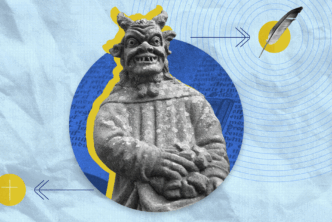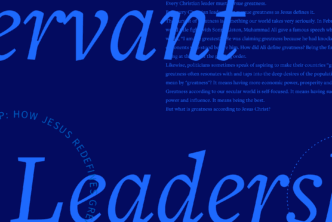If we wish to understand the Tree of Life and the Tree of the Knowledge of Good and Evil, we must begin with seeing them as a part of the creational order. Trees, along with plants and seed-bearing things, come to life by the word of God as part of the creation sequence on the third day (Gen 1:11–12).
Whatever else they mean or do later in the early chapters of Genesis, they are a part of those things which God delights to call “good” (Gen 1:13). Along with the other vegetation which grows on the third day in the waters and on the dry land, trees are seed-bearing and fruit-bearing. They are the first living and life-bearing things called into the creation. God gives to mankind the plants and the fruit of the trees as food (Gen 1:29). As this initial gift God makes abundantly clear, every fruit-bearing tree and seed-bearing plant is to be for food for the race of Adam.
2 special trees
The two trees of the Garden of Eden, though unique among the trees and plants of the world, are still “according to their kind” as fruit-bearing trees —they are food. God places them in the Garden, and he permits the Tree of Life to be eaten without delay or hindrance. But he places a prohibition on eating from the Tree of the Knowledge of Good and Evil. This is not the intrusion of an arbitrary temptation, but the restriction of something already proclaimed to be good, given to mankind for our consumption. This restriction will make more sense as we understand each of the Trees in turn.
The first tree1
The Tree of Life is the gift of the sustaining power of God. Those who eat of it live forever (Gen 3:22). From the beginning, even before the Fall, humankind was more than a biological entity. From the beginning, we needed more than food to live—we need God. It is, in other words, not only true of postlapsarian humanity that we “do not live by bread alone but by every word that proceeds from the mouth of God” (Deut 8:3). It has always been true.
As Adam and his race ate with God from the trees of the Garden which were given to them for food, they would experience biological renewal. By eating from the Tree of Life, they would receive inward and spiritual renewal, eternal life, growing strong on God’s life and maturing in his goodness.
This tree, the Tree of Life, is taken away from their menu after the Fall, and it is taken away for their good. Had Adam or Eve or any of their children, having sinned and fallen from glory (Rom 3:23), taken from that Tree they would have had endless life, but that living forever would have been a living forever in a condemned and cursed state, eternally cut-off from redemption. Being the Tree God made it to be, it would have sealed Adam and Eve, but it would have sealed them for destruction. To put it simply, their length of days would only have been a distended misery. Their living forever would be a living hell. By suspending the eating of the Tree of Life, God opened up his story for a plan of redemption, the opportunity for new life in God.
The second tree
The Tree of the Knowledge of Good and Evil, on other hand, while being for food is not permitted to be eaten by Adam or Eve at the beginning of their time in Eden. This commandment carries with it a consequence, that in the day when Adam eats of it he will suffer death (Gen 2:17). What this tree was cannot be a great mystery. It was, like the other trees, pleasant to the eyes and good for food (Gen 2:9, 3:6). By eating it, humanity was to gain knowledge and insight: authority in matters of good and evil.
It was more than a thing to be avoided: the Knowledge of Good and Evil did not lie in the sheer act of resisting the temptation to take from it. Nor is there anything in Scripture which suggests that the Tree of the Knowledge of Good and Evil was a mere antithesis to the Tree of Life, and that by the avoidance of the one humanity might be rewarded with a taste of the other.
Rather, the knowledge of good and evil suggests authority to rule and exercise judgement.2 It is what God does throughout the creation cycle. He sees what he has made and declares it “good” (e.g., Gen 1:10) or “very good” (Gen 1:31) or “not good” (Gen 2:18). Later Scriptures confirm this use, as when God warns Laban against levying a judgment of good or evil against Jacob (Gen 31:24). Likewise, the woman of Tekoa names David as the one who can adjudicate between good and evil (2 Sam 14:17).
Solomon, his son, prays for the gift of wisdom to “judge between good and evil” (1 Kgs 3:9)—a request which God grants. And the author of Hebrews longs for the church to grow in maturity, putting away the food of infants and moving on to true spiritual nourishment in order that they may discern between good and evil (5:14). The Serpent is not wrong, therefore, in telling the woman that eating of it makes one like God (Gen 3:5), nor is the woman wrong in esteeming it so.
The knowledge of good and evil, therefore, far from being an immutably evil thing, is a gift granted by the Lord in his time and in accordance with maturity. The prohibition was not a ban, it was a fast. The deceit of the Serpent was not pure invention. It was the abuse of God-given truths. While Adam and Eve were already like God, made in his image, the knowledge of good and evil would mature them more excellently in that image (Gen 3:5). And yet, precisely because it was not waited for, precisely because it was taken and not received in due time, the act of eating the fruit from the tree brought about the Fall.
The fruit of the eating of the fruit
The knowledge imparted was indeed a knowledge of good and evil, but it was a knowing sundered from the all-knowing Godhead. Knowledge after the Fall originates with the sinful self, which is the first place to which Adam and Eve look when their eyes are opened (Gen 3:7), instead of in the person of God. Subsequently, the ability of all mankind to adjudicate good and evil went askew. We have become a law unto ourselves, and each does what it right in his own eyes (cf. Rom 2:14; Deut 12:8; Judg 17:6).
The death which follows is real: humanity is estranged from God, from God’s world, from one another, and from our own selves. This is a very real and very severe death. The death which names the cessation of biological function in a body is the fruit of a world in which we no longer partake in the Tree of Life and in which justice is established apart from the knowledge of God. Granted, Adam and his race would still have undergone a kind of death after eating the fruit of the Tree of the Knowledge of Good and Evil even if they had waited for God’s timing and maturation. But that death, suffered then by an unfallen humanity, would have been akin to the transformative death which the man undergoes during the creation of the woman (cf. Gen 2:21–25). The deep sleep (תַּרְדֵּמָה) into which God places Adam is a state of doom, a death-like darkness, and God tears a curving portion of his body from him. Upon his rising-again, Adam finds the whole world different and himself different; he even has a new name (Gen 2:23). The old world, the one in which he was alone, has died and a new and more glorious world has emerged, one in which he is not alone. Likewise, the death of eating the fruit in God’s timing would have enacted a kind of death, the end of a simpler way of being in the world—but that death would have resulted in a rising-again. Though he may “surely have died,” he would also have surely risen again, moving from glory to glory. Instead, as the rest of Genesis relates, the children of Adam and Eve move from death to death, until the deluge.
Promise
In the judgements that follow the Fall, the man and the woman receive a promise. Amidst all the fruitlessness and toil of the world outside the Garden, in which the man has to work the ground from which he came until he returns to it (Gen 3:17), being cut off from the freely given fruit-bearing trees of the Garden, Eve is promised a new fruitfulness. She will be a kind of tree, pleasant to the eyes and good for bringing life, though marked now by pain (Gen 3:16). And she will bear a Seed who will arise and crush the head of the Serpent (Gen 3:15).
Already God’s plan for redemption employs the images of creation. Adam, with hope in God’s promises, gives his wife a new name, “Eve,” which means “mother of all the living” (Gen 3:20). She is a new seed-bearing plant whose Son will bring life to the world in Jesus Christ. He will wear a crown woven of his father Adam’s thorns (Gen 3:18). As a new Adam he, too, will have his side cut open (John 19:34), and he will hang on a tree like a ripened fruit. He is the one who will come to give his life for the life of the world (John 6:51), not merely as teacher or healer but as the Word of God who is food, the Bread of Heaven (John 6:32–33).
The cross of Jesus Christ, then, fulfills the story of the two unique trees in the Garden. The cross is the new Tree of Life from which God feeds his people and shares his eternal life with them. Jesus offers us more than mere physical sustenance, for we, too, do not live on bread alone. He offers us himself who is the Word of the Father (John 1:14). Those who take of him, we are promised, shall never hunger (for other spiritual sustenance); and we shall be raised up with Christ in the last day and shall live with him forever (John 6:35, 39). Those who take of the fruit of the cross in this way shall be sealed for the resurrection and for glory.
True knowledge of good and evil
The cross of Jesus Christ also fulfills the Tree of the Knowledge of Good and Evil. It was just before Christ went to the cross that Pilate, one who had been entrusted with the knowledge of good and evil, one entrusted to adjudicate and levy judgements, inquired of Jesus, “What is truth?” (John 18:38).
Such a question is the result of knowing good and evil apart from God; and such a question is answered by the long shadow of the crucifixion. To look at the cross is to be presented in the starkest relief what true maturity, wisdom, justice, and adjudicating authority looks like. Christ is the true king who rules and reigns in truth from the tree. The one who hangs there as its fruit is the fulfillment of the Law and the Prophets (John 5:39), the one who grew in wisdom and favor with God and man (Luke 2:52), the one whom the scribes could not answer (Matt 22:46), the one who was greater in wisdom than Solomon (Matt 12:42). To partake of his life, to eat of the fruit of the cross, to fellowship with Christ in his sufferings is to grow in true knowledge of good and evil. The cross is the road by which we come to wisdom not on our own terms but on God’s. Truly it is a tree of death, the One who was crucified on it died, and it puts things to death in us (Col 3:5), but those who eat of its fruit, who die with Christ, are raised with him (Rom 6:4–11).
Related Articles
Recommended Resources
Mobile Ed: John Walton Background of the Old Testament Bundle (2 courses)
Regular price: $299.99
- In what follows I am indebted to James B. Jordan, Trees and Thorns: Studies in the First Four Chapters of Genesis (Monroe, LA: Athanasius Press, 2021), though I diverge from him at certain points.
- Jordan, Trees and Thorns, 60.









